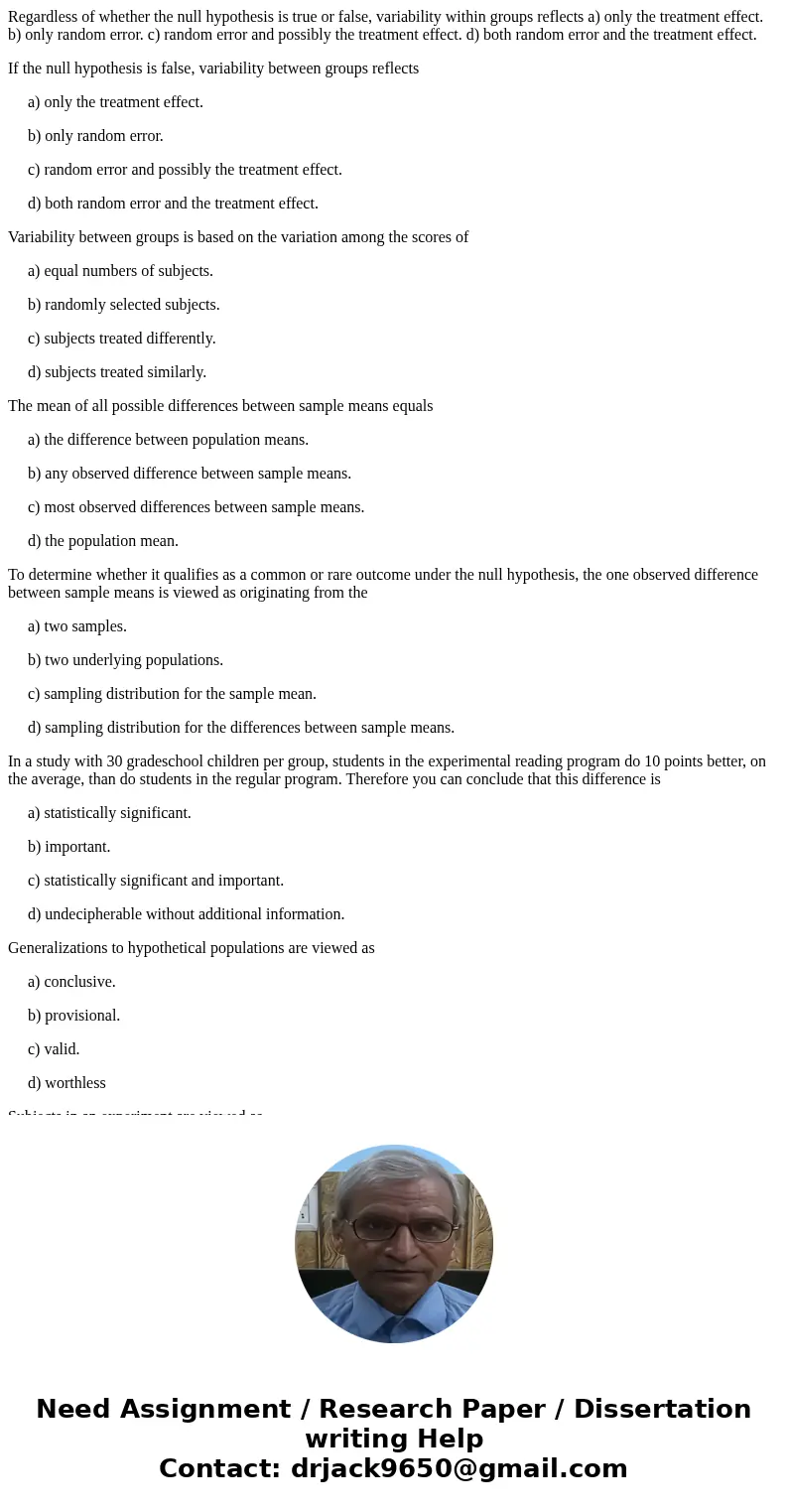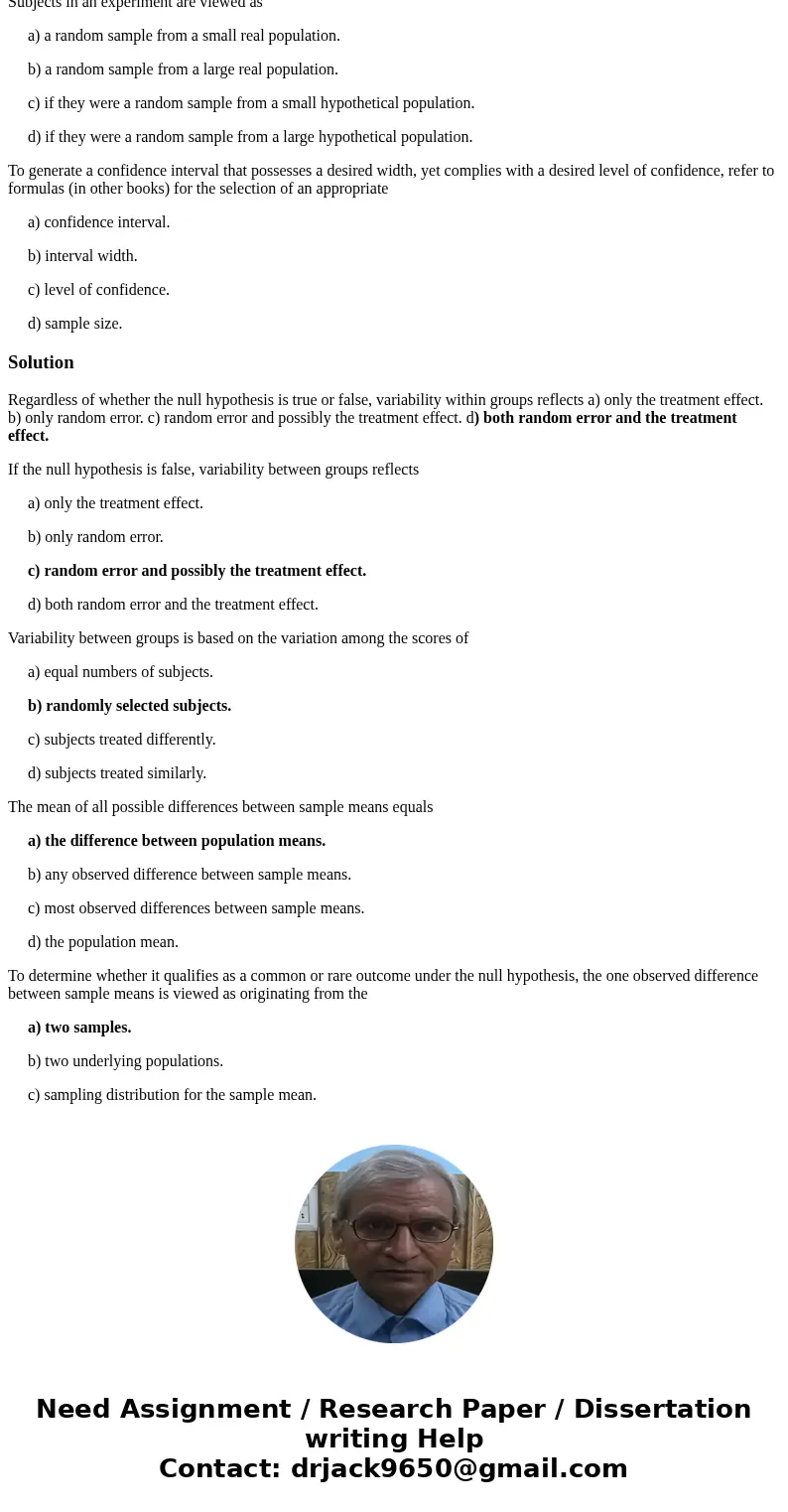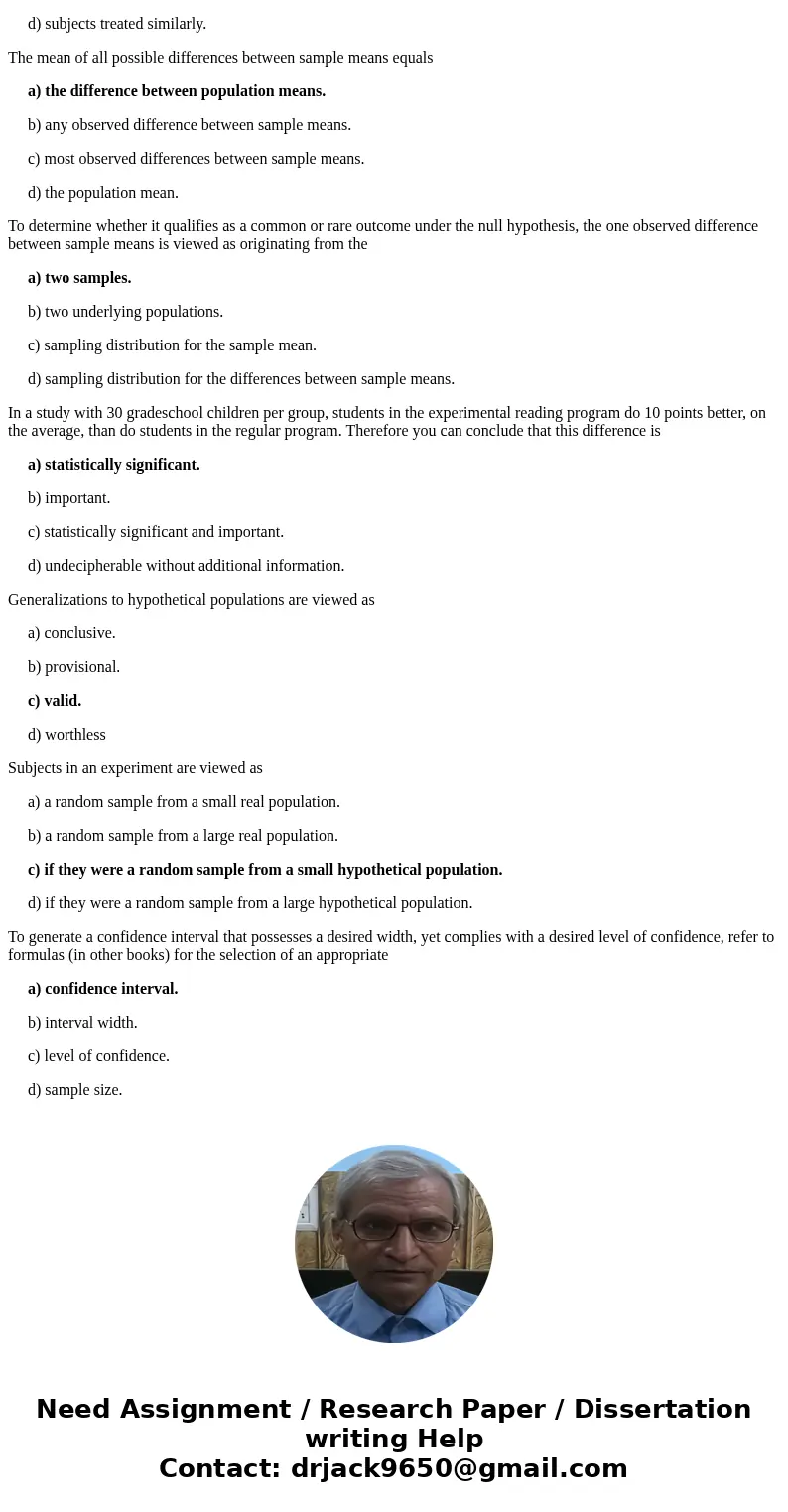Regardless of whether the null hypothesis is true or false v
Regardless of whether the null hypothesis is true or false, variability within groups reflects a) only the treatment effect. b) only random error. c) random error and possibly the treatment effect. d) both random error and the treatment effect.
If the null hypothesis is false, variability between groups reflects
a) only the treatment effect.
b) only random error.
c) random error and possibly the treatment effect.
d) both random error and the treatment effect.
Variability between groups is based on the variation among the scores of
a) equal numbers of subjects.
b) randomly selected subjects.
c) subjects treated differently.
d) subjects treated similarly.
The mean of all possible differences between sample means equals
a) the difference between population means.
b) any observed difference between sample means.
c) most observed differences between sample means.
d) the population mean.
To determine whether it qualifies as a common or rare outcome under the null hypothesis, the one observed difference between sample means is viewed as originating from the
a) two samples.
b) two underlying populations.
c) sampling distribution for the sample mean.
d) sampling distribution for the differences between sample means.
In a study with 30 gradeschool children per group, students in the experimental reading program do 10 points better, on the average, than do students in the regular program. Therefore you can conclude that this difference is
a) statistically significant.
b) important.
c) statistically significant and important.
d) undecipherable without additional information.
Generalizations to hypothetical populations are viewed as
a) conclusive.
b) provisional.
c) valid.
d) worthless
Subjects in an experiment are viewed as
a) a random sample from a small real population.
b) a random sample from a large real population.
c) if they were a random sample from a small hypothetical population.
d) if they were a random sample from a large hypothetical population.
To generate a confidence interval that possesses a desired width, yet complies with a desired level of confidence, refer to formulas (in other books) for the selection of an appropriate
a) confidence interval.
b) interval width.
c) level of confidence.
d) sample size.
Solution
Regardless of whether the null hypothesis is true or false, variability within groups reflects a) only the treatment effect. b) only random error. c) random error and possibly the treatment effect. d) both random error and the treatment effect.
If the null hypothesis is false, variability between groups reflects
a) only the treatment effect.
b) only random error.
c) random error and possibly the treatment effect.
d) both random error and the treatment effect.
Variability between groups is based on the variation among the scores of
a) equal numbers of subjects.
b) randomly selected subjects.
c) subjects treated differently.
d) subjects treated similarly.
The mean of all possible differences between sample means equals
a) the difference between population means.
b) any observed difference between sample means.
c) most observed differences between sample means.
d) the population mean.
To determine whether it qualifies as a common or rare outcome under the null hypothesis, the one observed difference between sample means is viewed as originating from the
a) two samples.
b) two underlying populations.
c) sampling distribution for the sample mean.
d) sampling distribution for the differences between sample means.
In a study with 30 gradeschool children per group, students in the experimental reading program do 10 points better, on the average, than do students in the regular program. Therefore you can conclude that this difference is
a) statistically significant.
b) important.
c) statistically significant and important.
d) undecipherable without additional information.
Generalizations to hypothetical populations are viewed as
a) conclusive.
b) provisional.
c) valid.
d) worthless
Subjects in an experiment are viewed as
a) a random sample from a small real population.
b) a random sample from a large real population.
c) if they were a random sample from a small hypothetical population.
d) if they were a random sample from a large hypothetical population.
To generate a confidence interval that possesses a desired width, yet complies with a desired level of confidence, refer to formulas (in other books) for the selection of an appropriate
a) confidence interval.
b) interval width.
c) level of confidence.
d) sample size.



 Homework Sourse
Homework Sourse